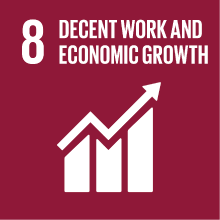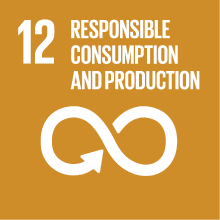LATE ANCIENT AND MEDIEVAL ARCHAEOLOGY
- Academic year
- 2025/2026 Syllabus of previous years
- Official course title
- ARCHEOLOGIA TARDOANTICA E MEDIEVALE
- Course code
- FM0669 (AF:579448 AR:325314)
- Teaching language
- Italian
- Modality
- On campus classes
- ECTS credits
- 6
- Degree level
- Master's Degree Programme (DM270)
- Academic Discipline
- L-ANT/08
- Period
- 1st Semester
- Where
- VENEZIA
Contribution of the course to the overall degree programme goals
Expected learning outcomes
1. Knowledge and Understanding
- To understand the research methodologies applied to the study of material culture in the medieval context.
- To identify the main classes of materials used in medieval archaeology research.
- To comprehend the geography and chronological framework of the primary material types.
- To be familiar with the main findings of recent archaeological research in the city of Venice.
2. Ability to Apply Knowledge and Understanding
- To chronologically frame classes and types of materials, with particular reference to glass and ceramics.
- To conduct an analysis of intra- and inter-site exchanges and trade based on material culture.
- To identify and analyze the factors of territorial organization in medieval and early modern cities, highlighting the underlying economic and social dynamics.
3. Judgement and communications Skills
- To formulate hypotheses and argue the dynamics of development and diffusion of objects, techniques, and ideas.
- To develop a critical approach to the evaluation of alternative hypotheses.
- To describe objects and their related ideas using technical language, appropriate terminology, and in a critical manner.
- To critically consult bibliographic tools useful for addressing in-depth studies and sector-specific research.
Pre-requirements
Contents
Covering the entire medieval period, from the 5th to the 15th century, the course includes a detailed analysis of everyday objects such as ceramics and glass, as well as residential structures, churches, and monasteries. In addition, the use of spaces and lands over time will be examined, contributing to a more complete understanding of the evolution of material life in medieval Venetian society.
Contents:
- The main economic models developed for the early Middle Ages: Wickham, McCormick, and the anthropological approach.
- A brief history of archaeology in Venice.
- Amphorae as indicators of trade: Comacchio, Venice, the Po River.
- Glass and the productive delocalization in the early Middle Ages: Comacchio, Torcello.
- Glass and medieval circular production.
- A global market: the case of coated Venetian ceramics.
- A local market: kitchen ceramics.
- Building materials in the context of eco-friendly construction, sustainability, and power: the petrification of Venice.
- Infrastructure and power: the wells.
- Industrial districts, regulatory plans, territorial organization: the city of Venice (12th-16th centuries).
Referral texts
Berti, G., Gelichi, S., 1995. Mille chemins ouverts en Italie, in: Le Vert et Le Brun. Marseille, pp. 129–164.
Berti, G., Gelichi, S., Mannoni, T., 1997. Trasformazioni tecnologiche nelle prime produzioni italiane con rivestimenti vetrificati -secc. XII-XIII, in: La Céramique Médiévale En Méditerranée. Aix-en-Provence, pp. 383–403.
Cantini, Federico. "Produzioni ceramiche ed economie in Italia centro-settentrionale." Italy, 888-962: a turning point. Italia, 888-962: una svolta: IV Seminario Internazionale, Cassero di Poggio Imperiale a Poggibonsi (SI) 4-6 dicembre 2009. 2013. 341-364.
Curta, Florin. "Merovingian and Carolingian gift giving." Speculum 81.3 (2006): 671-699.
Ferri, Margherita. Il vetro nell’alto Adriatico fra V e XV secolo. Sesto Fiorentino: All’Insegna del Giglio, 2022 [pp. 70-114]
Fouracre, Paul. "Lights, power and the moral economy of early medieval Europe." Early Medieval Europe 28.3 (2020): 367-387.
S. Gasparri, S. Gelichi, Le isole del rifugio. Venezia prima di Venezia, Roma-Bari, Laterza, 2024.
McCormick, Michael. "New light on the'dark ages': How the slave trade fuelled the Carolingian economy." Past & present 177 (2002): 17-54.
McCormick, Michael, Movements and markets in the first millennium: Information, containers and shipwrecks. Trade and Markets in Byzantium, ed C Morrisson (Dumbarton Oaks, Washington, DC), pp. 51–98 (2012).
Molinari, Alessandra. «Archeologia medievale e storia economica». Archeologia medievale, 2014, 95–110.
Molinari, Alessandra. «Le anfore medievali come proxy per la storia degli scambi mediterranei tra VIII e XIII secolo?» Archeologia medievale, 2018, 293–306.
Molinari, Alessandra. "La pietrificazione del costruito nell'Europa meridionale del pieno Medioevo: considerazioni comparative dalla prospettiva archeologica." La pietrificazione del costruito nell'Europa meridionale del pieno Medioevo: considerazioni comparative dalla prospettiva archeologica (2021): 275-287.
Sainsbury, Victoria A., et al. "Mutable objects, places and chronologies." Antiquity 95.379 (2021): 215-227.
Wood I., Creating a ‘temple society’ in the early medieval west, Early Medieval Europe 2021 29 (4) pp. 462–486
Assessment methods
During the course, two or three articles will be selected for the preparation of bibliographic summaries, which will be discussed in class and later reviewed during the oral exam.
At the end of the course, an oral examination will be conducted to assess learning through some open-ended questions and a discussion regarding the specific articles related to the bibliographic summaries.
The assessment aims to verify the acquisition of fundamental knowledge of the discipline as well as argumentative and synthesis skills, and mastery of scientific vocabulary.
More specifically, a basic knowledge of course content, contextualizing topics chronologically and using appropriate technical language, results in a sufficient grade (18-24/30); a good knowledge of course content, effectively framing topics chronologically and contextually, using technical language, and applying a critical approach, results in a good grade (25-28/30); a comprehensive understanding of course content, mastering complexities, critically contextualizing topics, linking to broader phenomena, offering original interpretations, and demonstrating critical reflection, results in an excellent grade (29/30 with laude).
Type of exam
Grading scale
- A grade between 25 and 28 out of 30 is considered good if the student is able to demonstrate a good knowledge of the course content by contextually and chronologically framing the topics discussed, using appropriate technical language, and arguing with a critical approach.
- A grade of 29 out of 30 cum laude is considered excellent if the student is able to show a comprehensive and detailed understanding of the course content, mastering the nuances, connections, and more complex implications, critically and articulately contextualizing the topics, linking course content to broader historical and contemporary phenomena, providing original interpretations, and demonstrating a capacity for critical reflection on the issues addressed.
Teaching methods
The course includes lectures and seminars (oral presentations in turns, participation in class discussions).
The exact schedule of lessons and topics will be provided at the beginning of the course and may also include visits to museum sites, to be arranged based on students' interests.
The materials used during the lessons will be available on Moodle for everyone.
At the end of the course, the instructor will ensure that a detailed list of the topics covered, corresponding teaching materials, and related bibliography is made available to everyone on Moodle.
Further information
2030 Agenda for Sustainable Development Goals
This subject deals with topics related to the macro-area "Circular economy, innovation, work" and contributes to the achievement of one or more goals of U. N. Agenda for Sustainable Development


